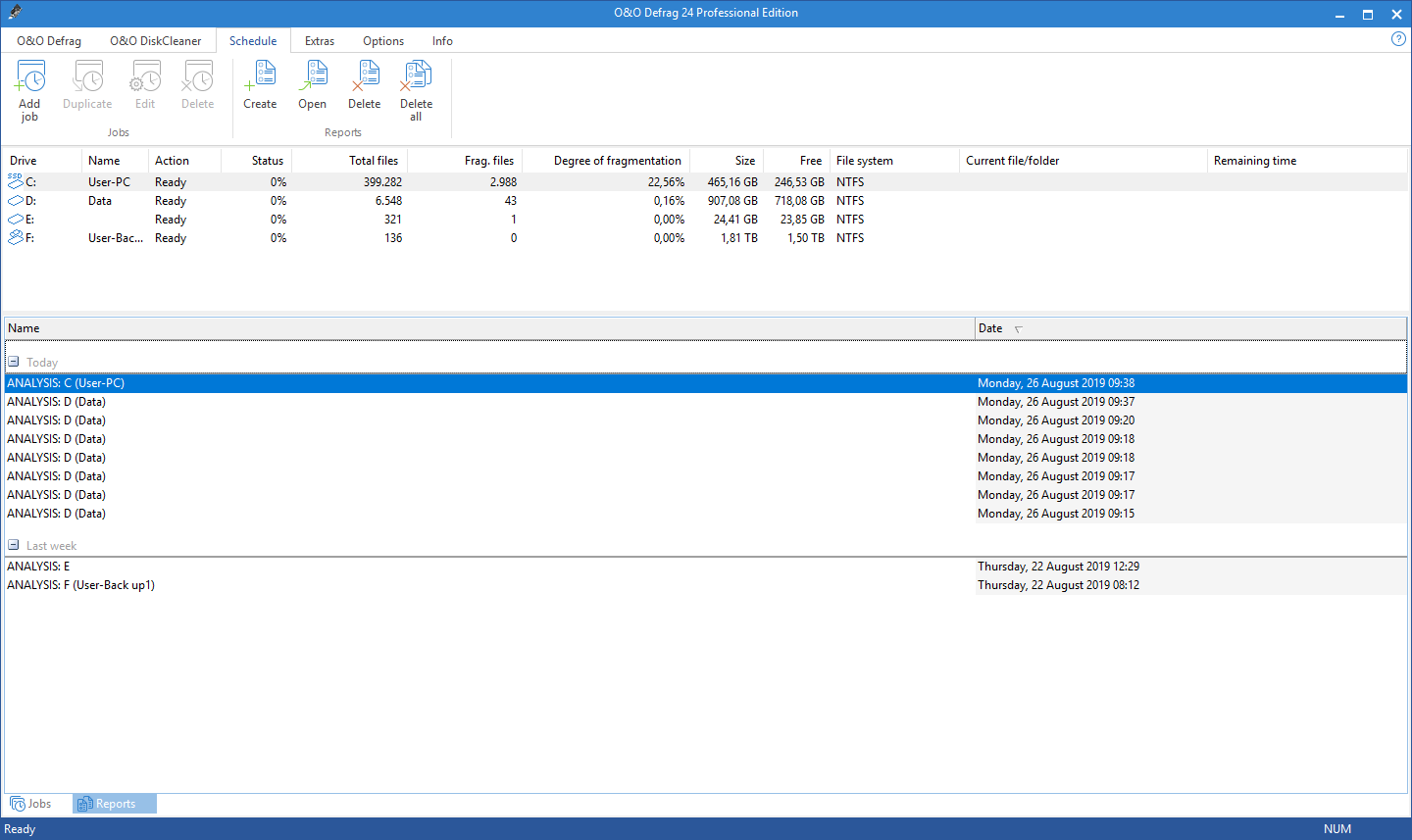O&O Defrag saves and manages all reports in Reports. To find reports, click Schedule and then Reports at the bottom of the program screen. Once you've enabled the option for creating status reports, the results of all analyzing and optimization processes will be recorded. The reports are listed chronologically and grouped in folders. The information in brackets indicates the drive and job for which the report was created. The reports contain all the relevant information about a drive's database, see "Status reports".
Status reports inform you on the performance state of your computer. The status reports by O&O Defrag include general information about drives and file systems, as well as the results of already executed defragmentations. They also include detailed lists of files that negatively influence system performance the most, either by their size or level of fragmentation.
The reports are HTML documents and can be read with any internet browser.

O&O Defrag: Report view
Creating Status Reports
Status reports are created after each analysis and after each defragmentation. Make sure that the option Create reports under Settings/General is enabled.
The O&O Defrag agent can keep a maximum of 999 reports for one computer, after which the oldest reports will be replaced by newer ones.
- Please select the drive for which you want to create a report from the drive list.
- Create the status reports by clicking Create in the Ribbon bar.
- The drive will be analyzed. You can see an analysis being run with the drive symbol in the progress display.
- Once an analysis is completed, the status report will be automatically saved and displayed.
Evaluating Status Reports

O&O Defrag Status report
Based on the O&O Defrag status reports, you can document the level of fragmentation as well as the results of defragmentation on your system. Status reports contain all important information regarding your hard disk drives.
The level of fragmentation is particularly important. It constitutes a normalized value of the fragmentation and can be used as a comparison for different systems and for hard disks of different sizes. This value ranges from 0 (completely defragmented) to 100% (completely fragmented). A low value of (under 5%) is recommended. You can also use this value in jobs when defining a threshold for an automatic defragmentation.
Deleting status reports
To deletea status report, select it in the report list and use your keyboard’s delete key. If you want to delete an entire report group, e.g. "Last month", all reports will be deleted in the specified time period.
The function Delete all, allows you to delete all reports at the same time.